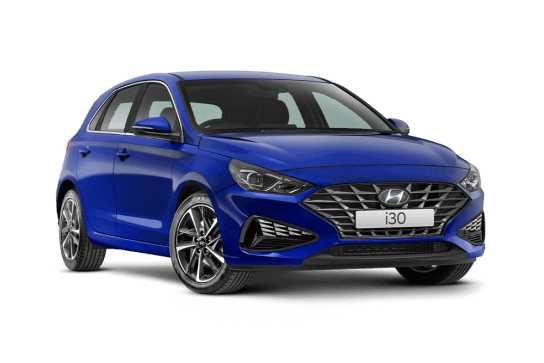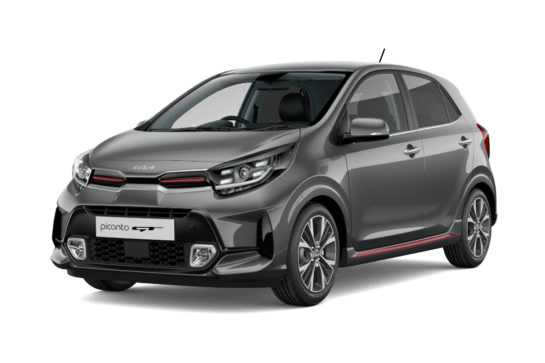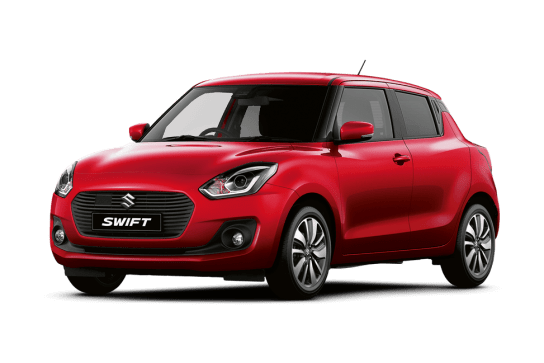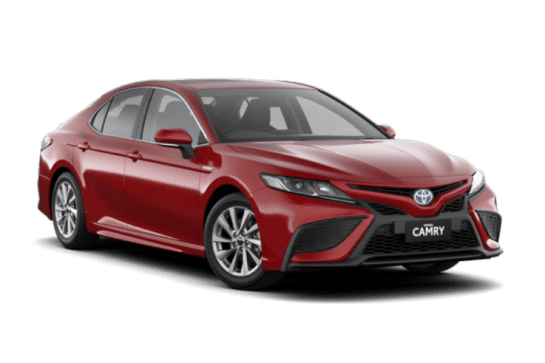
Honda Civic VS Toyota Corolla
Honda Civic
Likes
- Roomy cabin
- Strong powertrain
- Comfy ride
Dislikes
- Fussy styling
- Fiddly multimedia system
- Some road noise intrusion
Toyota Corolla
Likes
- Fuel efficient
- Enjoyable to drive
- Good value
Dislikes
- Small boot
- Not much rear legroom
- Wish it was a plug-in hybrid
Summary
Honda Civic
The clue’s in the name.
A permanent fixture of the small-car scene for nearly 50 years, the Honda Civic has long been a strong urban runabout proposition, providing quality, efficient and progressive engineering at affordable prices.
For 2020, a minor raft of changes to the hatchback version strives to improve what’s been a roomy, refined and enjoyable alternative to the Toyota Corolla since 2017.
Here we take a longer look at the Civic RS – one of the more popular and sportier grades in this 10th-generation series – to see how effective the updates are, as small cars struggle to stay relevant against the onslaught of compact SUVs.
| Safety rating | |
|---|---|
| Engine Type | 1.5L turbo |
| Fuel Type | Regular Unleaded Petrol |
| Fuel Efficiency | 6L/100km |
| Seating | 5 seats |
Toyota Corolla
The last time I drove a Toyota Corolla hybrid was a couple of years ago when I tested on by one by taking it 400km north from Sydney to a meeting of old cars with giant petrol engines, otherwise knows as a hot rod run, a pilgrimage to worship at the shortened exhaust of the combustion engine.
The good news is that nobody torched the Corolla hybrid during the night of revelry, and the other good news is that I found it to be an impressive car.
That was the previous generation Corolla hybrid, now the new-gen one is here and, while I didn’t take it on a hot rod run this time, I put it through another test – the day-to-day living challenge of pre-school drop offs and shopping, parking, commuting… I even used it to carry a 2.5m tall tree. So, is the new Corolla Hybrid just as impressive as the old one?
The grade I tested was the Ascent Sport. What does that mean? Read on to find out.
| Safety rating | |
|---|---|
| Engine Type | 1.8L |
| Fuel Type | Hybrid with Regular Unleaded |
| Fuel Efficiency | 4.2L/100km |
| Seating | 5 seats |
Verdict
Honda Civic8/10
The Civic RS may look like it was designed to keep up with racy Golf GTIs through twisting mountain passes – and it can certainly hold its own thanks to assured handling and roadholding – but it actually shines best as an urban family runabout proposition.
The key points to remember are that the turbo engine provides enough low-down punch for rapid round-town driving while returning reasonable economy, the suspension’s ability to soak up the rough stuff should help calm and soothe away the most trying commute, and the cabin’s focus on functionality and simplicity (fiddly multimedia screen aside) serves to enhance rather than distract from the job at hand.
With nearly half a century’s experience building Civics, it’s clear that Honda hasn’t forgotten how to build an excellent town car. Like we said in the beginning, it’s right there in the name.
Toyota Corolla7.6/10
I’m never going to stop worshipping the combustion engine and I’ll keep going to hot rod runs in my big, old V8-powered beast, but to me, if you’re going to buy a Corolla why wouldn’t you choose the hybrid? It’s more fuel efficient than a regular petrol variant and offers a better city driving experience, by being able to run silently and smoothly as an EV at low speeds with decent off-the-mark shove when you need it. As for hybrid rivals – there are none right now, but even if there were, Toyota’s perfection of hybrid tech over the past two decades means it would likely be better than the competition.
Would you choose the petrol or hybrid version of the Corolla Ascent Sport? Tell us what you think in the comments below.
Design
Honda Civic
Two things are immediately apparent about the Civic hatch’s brash aesthetics. Firstly, it’s big for a so-called small car, reflecting the model’s US-focus and with the upshot making for a pleasingly spacious cabin. And secondly, Honda’s designers seemed uncertain as to when to put pencils down. It’s a melting pot of fussy styling.
For some, the sleek fastback-style four-door sedan is a little more elegant, but both shapes stand out as truly individual. Sadly, with a move to cleaner and more geometric lines nowadays, gen-10 Civic is unlikely to age quite as gracefully as several earlier iterations.
That said, the RS’ large, turbine wheels fill the guards nicely, while that vast interior is right on the money, now that the fiddly touchscreen interface has partly given way to hard buttons for faster and more intuitive access to multimedia, ventilation and vehicle-control settings.
Sure, the Civic’s handsome dash architecture is swathed in a sea of monotone plastic, but it’s of hardy and consistent quality, is well-crafted (save for one persistent rattle in our test car) and is created to prioritise function over form, from the perfectly-placed screen and considered ventilation outlets, to the easy reach of most switchgear (barring the USB ports below and behind the buttressed centre-console layout.
Few cars at any price present a greater choice of, or more effective, storage solutions. Enormous cavities to lose things in seem to proliferate everywhere.
The RS’ stitched leather trim contrasts well to the matt metallic highlights decorating the dash and door cards, adding a dose of athletic intent. It’s fair to say, then, that – unlike the exterior styling – the Civic’s interior may weather the years better.
Toyota Corolla
There’s a lot of love for the Corolla, particularly older versions of the species (just ask our editor Mal, he rescues rusty ones out of paddocks), but the previous model was never really widely adored for its looks and was beginning to age compared to new and improved rivals. Enter this new-generation Corolla, which looks sexier and more modern.
I’m especially taken by the tail lights, which are far more appealing than the previous model’s egg-splat design. The same goes for the new headlight design and that large grille.
It’s a completely different Corolla to the last one, but has kept the same pointy nose at the front and the bulbous bum.
The only indication that the hybrid isn’t a petrol variant is the Toyota badge with the blue halo aura effect and, of course, the word ‘Hybrid’ on the tailgate.
The interior is also modern feeling with a large, cleanly designed dashboard with that touchscreen sitting prominently atop it, like a billboard. I have to admit, though, the Ascent Sport’s interior lacked a bit of wow-factor, with its hard surfaces and too much use of piano-black plastic. I know Toyota can do cool interiors – just look at the C-HR, so it’s a bit disappointing that the Ascent Hybrid’s cabin isn’t more interesting.
In terms of dimensions, the Corolla Ascent Sport Hybrid is 4375mm long, 1790mm wide and 1435mm tall. The small size made it easy to park in the tiny spots left outside my house by the time I get home, and easy to pilot in narrow laneways and city traffic.
Practicality
Honda Civic
The overall feeling in the Civic is that it’s low, wide and roomy. A big small car, if you will.
Getting in and out is easy, broad yet enveloping seats provide ample support up front and reasonable comfort, even for three (at a squeeze), out back, and that’s backed up by ample space for legs, knees and shoulders. Taller scalps might scrape the rear ceiling, though.
Back up front, that big central touchscreen does demand familiarisation – and the fact you need to confirm an action every time you restart the car is annoying – yet the basics are spot-on, from the excellent driving position and super-clear dials, to the abundant ventilation, logical control layout and the aforementioned storage bonanza.
The USB and 12V ports are a stretch away behind the two-level lower-console layout, but there’s nothing difficult or intimidating here otherwise.
That said, while the forward view is commanding and confidence-inspiring, shallow side and rear glass makes reverse parking tricky and the rear camera essential.
Speaking of the back of the Honda, a long, flat cargo floor offers very competitive luggage space (at 330 litres). With only a lipped sill to lift bulky things over, loading is effortless, although not everybody will appreciate the gimmicky cargo cover blind that needs to be pulled across like a sunshade. A space-saver spare lives below the floor.
Note that if you’re coming from the two earlier-generation (2006 and 2011) Civic hatches sourced from Britain, you may be disappointed to find that Honda’s ‘Magic Seats’ aren’t fitted, since the older cars were based on the Jazz supermini and had their fuel tanks beneath the front seats to enable the base and seat-back ensemble to fold down into a cavity for extraordinary floor-to-ceiling space.
Still, reflecting its focus on the key US market demographic, few rivals this side of a Kia Cerato feel, or are as accommodating as, our Thai-assembled Honda.
Toyota Corolla
I was afraid you’d ask me that question because the answer is: not very. The legroom in the back seat is tight, so much so that at 191cm tall I can’t fit behind my driving position. I’m tall, but even our more normal-sized reviewers found the rear legroom to be limited.
My four-year-old is only three feet tall and he remarked that “Mummy’s seat is squashing my feet”. That was when he was in his car seat and my wife was sitting next to me. She had to move her seat almost until her knees touched the dash so that his feet weren’t squashing.
Also a bit disappointing is the boot space – 217 litres of cargo capacity if you have a space-saver spare wheel and 333 litres if you go with the tyre-repair kit. That’s too small for our CarsGuide pram, so if you’re thinking of a Corolla as your next family hatch, then I’d take your pram/golf clubs/drum kit and test out the space before handing over your money.
Cabin storage isn’t bad, with two cupholders up front and two in the back, along with bottle holders in the doors. The centre-console bin offers good storage and there’s a small tray in the second row big enough for a wallet.
As for USB ports, there’s a lonely looking one under the dash.
If it’s any consolation, I used the Corolla to transport a 2.5m tall tree that arrived at CarsGuide HQ for me after I ordered it online. My other two choices were a Mitsubishi Triton ute and a Ford Mustang and, as it turned out, the hybrid hatch was better suited to the job, as you can see in the images. So there you have it: the Corolla is more practical in some ways than a ute or a Mustang.
Price and features
Honda Civic
First thing’s first. Don’t be misled by the Civic’s evocative ‘RS’ badge. This is no hot hatch of the wild Ford Focus RS variety; that’s the ballistic Type R’s lot in life.
Instead, like a Civic in Lululemon, the RS is the automotive equivalent to an athleisure outfit, striving for a sporty yet stylish and easy fit.
To that end, the $33,540, automatic-only RS continues with the 127kW/220Nm 1.5-litre four-cylinder turbo engine (rather than the 104kW/174Nm 1.8-litre naturally aspirated unit powering the lesser VTi and VTi-S), but introduces larger alloy wheels (up from 17 to 18 inches) shod with top-shelf Michelin Pilot Sport 4 tyres (a massive thumb’s up), reshaped bumpers, a new rear diffuser, different grille and fresh colours.
Stepping inside, the RS adopts auto high-beam headlights (of superb spread but tardy response since sometimes they don’t switch off in time, so dazzle on-coming traffic), physical buttons (including a volume knob at last) for the 7.0-inch touchscreen and dual-zone climate-control systems, and updated seat and dash trim inserts. Still looking fresh.
Only turbo Civics offer Honda’s ‘Sensing’ safety package that brings autonomous emergency braking, forward collision warning with pedestrian detection, adaptive cruise control with stop/go functionality, lane departure warning, lane-keep assist and steering assist, thus almost matching direct rivals like the Corolla and Mazda3 that standardise most of these from base-model up.
There are a couple of driver-assist omissions, though. More on that in the Safety section below.
Other RS goodies include leather upholstery, heated front seats, a powered driver’s seat, LED headlights, a multi-angle reverse camera with inside-lane view to avoid cyclists (brilliant), privacy glass, DAB+ digital radio, Apple CarPlay/Android Auto connectivity, a (smashing) premium audio system and keyless entry/start with walkaway locking. Handy.
The RS undercuts the $35,590 Hyundai i30 N-Line Premium and $35,090 Mazda3 G25 GT (though lesser-equipped grades are available in both), matches the $33,490 Kia Cerato GT Turbo but trails the $32,240 Ford Focus ST-Line with Driver Assist Pack and $32,135 Corolla ZR – but the latter makes do with the standard 2.0-litre engine and the ZR Hybrid for an extra $1500 is substantially down on oomph against this lot.
The spare is a space-saver while all RS colour choices are either metallic or pearlescent, with no cheaper flat paint alternative.
Toyota Corolla
The Ascent Sport is the entry grade into the Corolla range and the hybrid version is $1500 more than the petrol-engined variant at $25,870.
What other hybrids are there on the market for this price? Not many. The Mazda3, Hyundai i30 and Kia Cerato are the top three rivals to the Corolla and none of those come with a hybrid powertrain.
There is the Hyundai Ioniq, which is larger and a damned good thing, but the most affordable one costs way more, at $33,990. The closest car to the Corolla Hybrid isn’t really a competitor but more of a sibling rival, in the form of the Toyota Prius C, which was being offered at a driveaway price of $27,596 at the time I wrote this.
The rest of the hybrids available to us in Australia right now are either prestige cars or SUVs. So, while the Corolla is far from a hatchback unicorn, the hybrid version really is unique.
Standard features on the Ascent Sport Hybrid for the most part mirror those on the petrol version. The list includes LED head- and tail lights, LED running lights, heated and power door mirrors, an eight-inch touch screen with reversing camera, six-speaker stereo, Bluetooth connectivity, dual-zone climate control and some cool advanced safety tech, which you can read about below.
As far as standard features go, Toyota hasn’t been super generous and you’re made to step up to the SX if you want sat nav and the wireless-charging pad, while you need to climb higher into the top-grade ZR if you want to swap the cloth seats for leather.
One of the bonuses of buying the hybrid version of the Ascent Sport is getting dual-zone climate – the petrol version only has single zone air conditioning.
Still, at $26K the value equation is impressive.
Under the bonnet
Honda Civic
Diesels aside, Honda famously eschewed turbos for decades, relying instead on multi cams, variable-valve timing and other high-tech advances to get the most out of its (mostly brilliant) petrol engines.
For Australian buyers, the tenth Civic broke the rule, and with it brought a terrifically flexible 127kW/220Nm 1.5-litre four-cylinder turbo that maintains the urge of old Hondas at the top end, without the need to rev the daylights out of it at lower engine speeds.
Driving the front wheels via an ultra-smooth continuously variable transmission, off-the-line response is pleasingly immediate, and the power just keeps on coming on, making for a slick and rapid machine.
In fact, there’s enough torque on tap for the driver to avoid the engine droning typically associated with CVTs in most instances, except when mashing the pedal right down for, say, fast overtaking.
That droning comes about because the single-speed CVT is tuned to keep the engine revving at a pre-determined spot (usually close to the red line) to achieve access to maximum power.
That’s about the only time when the 1.5-litre turbo ensemble hits a sour note, as it's also accompanied by an uncharacteristically un-Honda gruffness. But, like we said, it’s avoidable for most urban scenarios, and soon just blends in with the rest of the RS' driving experience.
Toyota Corolla
So, you’re thinking of a petrol-electric hybrid, eh? Well you’ve come to the right review because Toyota has been producing hybrid cars on a huge scale longer than anybody, which has given the company decades to refine and develop the tech.
The Ascent Sport Hybrid doesn’t plug into a power point. Toyota doesn’t currently sell any plug-in hybrids in Australia. Nope, this one builds the charge back up in its batteries from the energy captured when you brake.
Those nickel-metal hydride (Ni-MH) batteries are in the back of the car and under the bonnet you’ll find an a 72kW/142Nm 1.8-litre four-cylinder petrol engine and a 53kW/162Nm electric motor. The engine and motor take turns and also work together to drive the front wheels, and the transition between one power source and another is smoother than any other hybrid I’ve driven.
The transmission is a CVT, which is an automatic and, while I’m not a fan of them in petrol variants, because they cause the engine to rev without much in the way of shove to go with it, in a hybrid the extra torque from the motor means acceleration is pretty good.
Efficiency
Honda Civic
Another key benefit to going turbo in the RS’ case is commendable fuel consumption. We managed a trip-computer-indicated 7.9L/100km around our mostly-urban driving loop, against the official combined average of 6.4L/100km. That’s just 1.5 litres shy of the claim.
Honda states that standard 91RON unleaded petrol is fine, and with the 47-litre tank, over 734km between refills is possible.
Toyota Corolla
This is what it’s all about right? Well, sort of. Hybrids of this kind don’t achieve fuel economy as good as, say, a plug-in hybrid and while Toyota claims the Ascent Sport Hybrid should only use 4.2L/100km after a combination of open and urban roads, after mainly city testing I measured 7.7L/100km when I filled up at the petrol station. It takes 91 RON, by the way.
That fuel economy is still good, considering our testing of the regular petrol variant saw it use 9.0L/100km.
Driving
Honda Civic
Honda has tuned the 1.5-litre turbo/CVT combination to great effect around town, since it offers seamless acceleration and (mostly) quiet operation in almost all urban environments, for un-intrusive point-to-point motoring. It’s a slick city-friendly machine.
Perhaps it’s the quality Michelin Pilot tyres talking, but the RS’ steering, handling and roadholding behaviour really seemed to have improved over the already-competent pre-facelift version released over three years ago.
From the first turn of the wheel, the Honda feels connected to the road and nicely measured in response, yet is also light and agile enough to be easy to manoeuvre through tight spots and between gaps in traffic. The turning circle is also small for effortless parking.
Out away from the confines of the Big Smoke, the car continues to feel secure and surefooted, taking fast curves with a flat and solid attitude that encourages keener drivers to step things up if feeling inclined to. Brakes feel natural, progressive and reassuringly strong.
The biggest stride the Civic’s taken, however, is in its ability to absorb all sorts of bumps back in the urban jungle, smoothing over bad roads with a high degree of isolation.
And this is despite the switch to larger (18-inch) alloys. You can probably attribute the sophisticated multi-link rear suspension system, elevating the Honda to the pointier end of the class in terms of dynamics.
About the only criticism is the level of road-noise intrusion at even moderate urban speeds, but even this is still within the class average. That said, Honda ought to ride in the latest Mazda3 or Volkswagen Golf if it really wants to see how quietness should be done.
Still, overall, the RS impresses with its maturity and refinement.
Toyota Corolla
Welcome to the driving bit, which will make even more sense if you read the section above, which explains how the hybrid system isn’t alien technology, but rather a petrol engine and an electric motor engaged in a constant dance to provide drive to the front wheels.
That engine-motor combination works superbly and more seamlessly than any other hybrid I’ve driven. I even like the CVT transmission, which is something I thought I’d never write, because when this type of automatic is in a petrol variant it provides a lucklustre feel to the acceleration. It's not the case here, thanks to the help of the motor, which adds instant torque and good off-the line shove.
Combine this with great steering, good handling, a comfortable ride and a very quiet cabin, and you have a hatch that’s enjoyable to drive. I’m not going to say outstanding (it’s not quite an 8 out of 10) because the Mazda3 is also impressive to drive and so are the Hyundai i30 and Kia Cerato. But the Corolla Ascent Hybrid is right up there with them.
Safety
Honda Civic
As stated earlier, only the turbo Civics in Australia score Honda Sensing, and that currently covers most of the driver-assist safety offered right now in the small-car class. Yet all Civics, regardless of turbo status, score a maximum five-star ANCAP rating, awarded in 2017.
Sensing includes camera and radar-based AEB, forward collision warning with pedestrian detection (but not for bicycles like some other rivals), adaptive cruise control with stop/go and slow-traffic follow functionality, lane departure warning, lane-keep assist, steering assist and auto high beams.
However, unlike the Mazda3, Corolla, and various others, the Civic misses out on Rear Cross Traffic Alert (RCTA) and Front Cross Traffic Alert (FCTA), which automatically brakes the vehicle at up to a certain speed when nosing or reversing into traffic.
Other safety items are six airbags including curtain items covering second-row outboard occupants, stability and traction control systems, and anti-lock brakes with electronic brake-force distribution and brake assist.
For younger travellers, there are two ISOFIX points and three top tethers fitted.
Toyota Corolla
The Corolla Ascent Sport Hybrid scored the maximum five-star ANCAP rating when it was tested in 2018. Coming standard are AEB with pedestrian and cyclist detection, adaptive cruise control and lane-keeping assistance, speed-sign recognition and auto high beam headlights.
There are also seven airbags and for child seats you’ll find three top-tether points and two ISOFIX mounts across the second row.
Ownership
Honda Civic
Like all Hondas, the Civic RS offers the industry-standard five year/unlimited kilometre warranty with roadside assistance, so it trails Kia’s leading seven-year coverage.
It also calls for servicing once every 12 months or 10,000km whichever comes first, and features capped-price servicing known as 'Honda Tailored Servicing', that lasts for five years or 100,000km.
As of May 2020, each standard service costs $297 (except the 80,000km one, which is $328).
That’s more than Toyota’s regime, which for Corolla ZR is $180 for the first four years/60,000km.
Toyota Corolla
The Corolla Ascent Sport Hybrid is covered by a five-year/unlimited kilometre warranty and a five-year capped-price servicing plan. Servicing is recommended every 12 months or 15,000km and you can expect to pay $175 for each of the first four services.

























































